i see the promised land--the death of moses (deuteronomy 34)
We began telling the story of Moses in early July; now it is November. We began in the midst of summer vacations; now, the other night, I watched as they hung the Christmas wreaths in a shopping area three minutes from here. It is a long story, the life of Moses, it is the story of the Old Testament, just as the life, death and resurrection of Jesus is the story of the New Testament. This narrative which stretches across several biblical books, includes birth and burning bush, call from God and encounter with Pharoah, Passover and plagues and provisions in the desert, cloud and fire, commandments at Sinai, obedience and idolatry, triumph and frustration. It’s all there, in this story of the life of Moses.
One of the reasons we need to know about Moses is that his life parallels our own lives in so many ways. We have experiences of God. We make excuses. We are courageous. We are afraid. We do the right things. We get lost. We are on a journey. Sometimes we are on the mountaintop. Sometimes we are in the wilderness. Sometimes we know where we are going. At other times we don’t have a clue. Have you ever seen the bumper sticker, “Don’t follow me, I’m lost”? Well, that would be Moses.
And yet, Moses is the great figure in the Old Testament. At the end of the Torah, the heart of the Hebrew Scripture, there is the saying, in Deuteronomy 34. 10: “there has not arisen a prophet in Israel like Moses, whom the Lord knew face to face”. Now we come, this morning, to the end of the story, to the death of Moses. It is not altogether what we would call a happy ending, but it is an ending filled with meaning and importance. Some of you families, gathered here on All Saints, have lived through such an ending. In the passage, Moses is given a panoramic view of the promised land. This had been his life’s goal. This had been the driving passion of his life, to lead his people to the land flowing with milk and honey, to reach the promised land. And so there is Moses, surveying it all.
I remember a few years ago, Pam and I were just beginning to try to get into the housing market. We have lived in parsonages most of our adult lives, but there is a problem there: when you retire, most churches don’t want you to live in one of the Sunday School classrooms! And so we would take our day off, Friday, and drive to different places, to look around: Ashe County, Hendersonville, Mount Airy, Lake Junaluska. A friend heard about this and he said, “I want you to see my mother’s place, I don’t know that she is ready to sell it, but I want you to see it”. And so he gave us the directions, and the keys to the homeplace. We drove up I-77, above Mount Airy, into Virginia, and turned right and east on the Blue Ridge Parkway, in Fancy Gap. We made a couple of other turns, pulled into the property, and got out of the car.
We looked around and caught our breath. It was an amazing view, perched up there, looking down across North Carolina. You could see Winston-Salem, and to the left Greensboro. To the west was Grandfather Mountain. The view was incredible. We couldn’t believe it! It turned out that our friend was right: his mother was not ready to sell it!
I imagine Moses, with God, at the end of a long life: “This is what I promised you, Moses. This is what I promised to give to Abraham and Sarah and their children and grandchildren. And then God says, “Moses, I have some good news and some bad news. The good news: I am going to let you see the promised land; the bad news: you will not cross over into it”.
The promise is within his sight, but not his grasp. In 1968, the night before he was assassinated, Martin Luther King was preaching on this passage of scripture at a church in Memphis. He said, “I’ve been to the mountaintop….Like anybody else I would like to live a long life. Longevity has its place. But I’m not concerned about that now. I just want to do God’s will. And he’s allowed me to go up to the mountain. And I’ve looked over. And I’ve seen the promised land. I may not get there with you…”.
The promise is within his sight, but not his grasp. In Hebrews 11, there is a family history of the faithful, those who listened for the voice of God and followed, Abraham, Sarah, Isaac, Rahab, Samuel, David, Samson, Gideon, and Moses. And at the end there is a statement: “All these, though they were commended for their faith, did not receive what was promised” (11. 39).
There is an incompleteness to this life. After Moses sees the promised land, and learns that he will not cross over into it, he dies. As you might imagine, the death of Moses has provoked speculation over the centuries. What did it mean?
There is a wonderful story that the rabbis tell. Upon learning that he would not cross over into the promised land, Moses asked God for a favor. Moses asks, “Holy One, though I cannot enter the promised land as a human, would You allow me to fly over the land like a bird, or graze upon it like a cow? The Holy One replies, “no”. But the rabbis say that this must had been spoken with sadness, because God, along with the earth and heavens, wept when Moses finally died.
No one knows the place of his burial, the scripture tells us. This may have something to do with what comes next---a time of mourning, and then the introduction of Joshua. Moses lays his hands on Joshua, Moses had imparted a blessing to Joshua, Joshua us full of the spirit of wisdom, carrying on the work of Moses the prophet.
On All Saints we remember those who have died in the past year, just as it is important to remember Moses, but we also recognize that death is both an ending and a beginning. The end of the Torah hints that with a death there is also a birth, Moses laying his hands on Joshua, one generation blessing the next. One of the most important things we can do, at the end of our earthly lives, is to bless the next generation. The is the mysterious work of God, and we know it when we experience it.
And then, a final grace note about Moses: “never has there arisen a prophet in Israel like Moses, whom the Lord knew face to face” (10). Isaiah could not bear to see the vision of God in the temple, it was so overwhelming. “No one has ever seen God”, John writes. “Now we see in a mirror dimly”, Paul writes about our present human experience, “but when all the special gifts and powers come to an end, only faith, hope and love will remain; “now we see in a mirror dimly---then we shall see face to face”(1 Corinthians 13).
To see God as Moses saw God, to see the face of God, is to cross over into the promised land, it is to know as we are fully known, it is to gather with the saints, the saints of scripture and the saints whose lives have influenced our lives, it is to gather with the saints at the river that flows from the throne of God: these are the rich images from scripture that help us, when we are experiencing the incompleteness of life, when we see what we cannot grasp and long for what we do not possess. And yet we know that God has promised it to us. All Saints is about remembering the past, even as Holy Communion is recalling the command of the Lord, “do this in remembrance of me”. And yet All Saints is about a hope that is beyond our grasp but within our sight, it is about a great banquet that God will prepare for us. The journey of Moses to the promised land is your journey and my journey.
One of my favorite preachers is Reginald Mallett. A number of us heard him preach at Lake Junaluska this summer. He is a British Methodist minister and also a physician. I heard him tell of this experience, years ago now, which he had heard at a funeral given by an Irish minister at the death of his 38 year-old daughter. A part of the context is the bitter divide within Ireland itself.
“When I came to this city”, the Irish minister said,
“I discovered that it was divided
by the river that separated two groups of people.
On this side of the river we were protestants.
On the other side of the river, they were catholics.
And we on this side of the river had nothing to do
with those on the other side of the river.
And then God sent into our home a little girl
and as she grew up she went to school on the other side of the river.
She made friends with people on the other of the river.
She brought them home and we met them and we came to love them.
As she grew older she brought home a fine young man
who lived on the other side of the river.
They married, and they went to live on the other side of the river.
They had three children, our grand children, he said,
and they lived on the other side of the river.
In time I came to see that there was more of my heart
on the other side of the river
than there was on this side of the river.
The Irish minister said, referring to his deceased daughter,
now my little girl has done it again.
She has crossed another river and I have to tell you,
that my heart is no longer here.
It is on the other side of the river.
That is what this day is all about: All Saints.
I have reached the stage in this life,
and I dare say many of you are there,
where I have as many friends on the other side of the river
as I have on this side of the river.
Moses sees the promised land, and maybe, this morning, some of us do too, as we think about the saints in our lives. And maybe they have placed their hands upon us and blessed us and given us their wisdom, a vision they saw of this world and what it might be like, I think of Martin Luther King, Jr’s great sermon, “I See The Promised Land”, and the world to come is a vision that keeps us moving, bound for the promised land, maybe someone from your past, your own saint is saying, singing, to you,
I am bound for the promised land, I am bound for the promised land,
O who will come and go with me, I am bound for the promised land.
They are singing to us, and so maybe we say, maybe we sing, to them:
Soon we’ll reach the shining river,
Soon our pilgrimage will cease
Soon our happy hearts will quiver
with the melody of peace.
Yes we’ll gather at the river
the beautiful, beautiful river,
gather with the saints at the river
that flows from the throne of God.
Let us pray:
O God, life on this side of the river has everything to do
with life on the other side of the river.
Sometimes our souls cry out for a connection with the other side of the river.

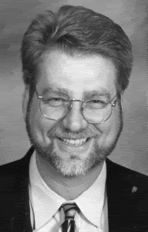
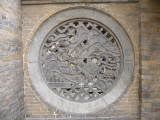
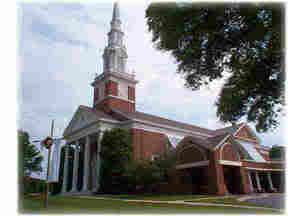
 Carter's Roost
Carter's Roost
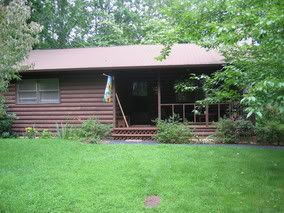
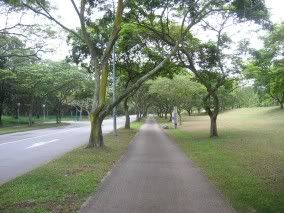
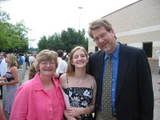

0 Comments:
Post a Comment
<< Home